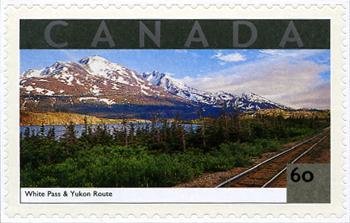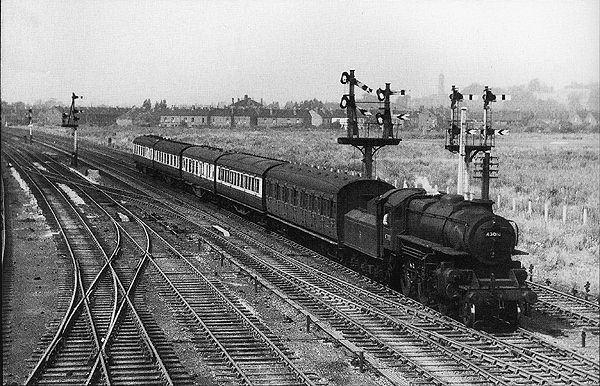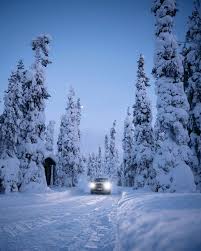Stamp: White Pass and Yukon Route (Canada 2001)
White Pass and Yukon Route (Canada 2001)
11 May (Canada ) within release Definitives goes into circulation Stamp White Pass and Yukon Route face value 60 Canadian cent
| Stamp White Pass and Yukon Route in catalogues | |
|---|---|
| Stamp Number: | Sn:CA 1903c |
Stamp is horizontal format.
Also in the issue Definitives:
- Stamp - Sugar Bushes, Quebec face value 60;
- Stamp - White Pass and Yukon Route face value 60;
- Stamp - Court House, Niagara-On-The-Lake, Ontario face value 60;
- Stamp - Canadian Tulip Festival, Ontario face value 1.05;
- Stamp - Auyuittuq National Park, Nunavut face value 1.05;
- Stamp - Signal Hill National Historic Site, Newfoundland face value 1.05;
Stamp White Pass and Yukon Route it reflects the thematic directions:
A landscape is the visible features of an area of land, its landforms and how they integrate with natural or man-made features. A landscape includes the physical elements of geophysically defined landforms such as (ice-capped) mountains, hills, water bodies such as rivers, lakes, ponds and the sea, living elements of land cover including indigenous vegetation, human elements including different forms of land use, buildings and structures, and transitory elements such as lighting and weather conditions. Combining both their physical origins and the cultural overlay of human presence, often created over millennia, landscapes reflect a living synthesis of people and place that is vital to local and national identity. The character of a landscape helps define the self-image of the people who inhabit it and a sense of place that differentiates one region from other regions. It is the dynamic backdrop to people’s lives. Landscape can be as varied as farmland, a landscape park, or wilderness. The earth has a vast range of landscapes, including the icy landscapes of polar regions, mountainous landscapes, vast arid desert landscapes, islands and coastal landscapes, densely forested or wooded landscapes including past boreal forests and tropical rainforests, and agricultural landscapes of temperate and tropical regions.
Railways - Transportation system made up of metal rails which is designed to allow trains to maneuver on the tracks from one location to the next.
Snow comprises individual ice crystals that grow while suspended in the atmosphere—usually within clouds—and then fall, accumulating on the ground where they undergo further changes. It consists of frozen crystalline water throughout its life cycle, starting when, under suitable conditions, the ice crystals form in the atmosphere, increase to millimeter size, precipitate and accumulate on surfaces, then metamorphose in place, and ultimately melt, slide or sublimate away.
A lake is a naturally occurring, relatively large and fixed body of water on the Earth's surface. It is localized in a basin or interconnected basins surrounded by dry land. Lakes lie completely on land and are separate from the ocean, although they may be connected with the ocean by rivers, such as Lake Ontario. Most lakes are freshwater and account for almost all the world's surface freshwater, but some are salt lakes with salinities even higher than that of seawater. Lakes vary significantly in surface area and volume.




